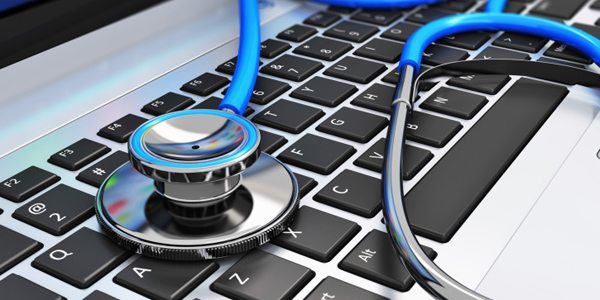Teleradiology is successfully used in the USA and European countries as a modern method of diagnosing diseases. As officially stated at the 15th Congress of Radiology, online counseling has become an integral part of the medicine of the future. Let’s see what teleradiology actually is and why it is needed.
Teleradiology as part of Health IT
Teleradiology is the transmission of a patient’s X-ray examination results to a radiologist using computer equipment and information technology. In other words, the image obtained from the X-ray is sent to the doctor via email or any other online communication channel. The specialist who received the image can help with its reading or making a diagnosis.
Radiologists often find it difficult to unequivocally interpret the results of an examination. When looking at an X-ray image, even experienced specialists may overlook a symptom of a serious illness in its early stage. Young radiologists find it even more difficult due to their lack of experience. Teleradiology is designed to eliminate areas of concern and improve the treatment and diagnostic process.
Modern hardware and software allow us to take high-quality pictures that require little space in a device’s memory. MRI and CT images can be stored on electronic media and sent to another specialist via messenger apps to get another opinion on the diagnosis.
Teleradiology is used in the following cases:
• remote monitoring of the dynamics of the patient’s condition;
• urgent examination in case of emergency;
• convocation of a council to resolve a complex diagnostic issue;
• online training of radiologists;
• sending images to medical institutions;
• storage of large research archives.
Problems at the stage of introducing teleradiology
The introduction of telemedicine, like any other innovation, is not always positively perceived by old-school doctors. Many specialists with extensive experience and knowledge in the field of radiology are not willing to learn how to work with unfamiliar technologies. Also, the necessity to consult with colleagues from other medical institutions provokes the indignation of some doctors.
An important factor here is the lack of a legal framework regulating consultations via teleradiology. Responsibility for the diagnosis is borne by the doctor consulting the patient on their problem, and not by the specialist who outlines their vision of the diagnosis online. Doctors wonder: who will be accountable if a diagnosis made by a more qualified (according to licenses) specialist turns out to be incorrect?
In Europe, the government supports telemedicine by providing the opportunity for agreements on accountability between doctors of medical institutions interacting in the framework of teleradiology. This smoothes relationships between colleagues and allows them to focus on the patient.
In the United States, the authorities are trying to provide clinics with all the necessary medical imaging solutions and equipment, for example, video graphics systems that even allow for surgical operations under the remote supervision of experienced doctors.
Not all clinics and medical centers are provided with such technologies yet, of course. However, digitalization in medicine is actively developing. Healthcare software companies receive regular orders for such projects. For example, we at Andersen were recently engaged in medical imaging software development for surgery assistance and are working on other healthcare digitalization projects.
Situations where teleradiology is of significant help
For example, a pulmonary embolism – a fatal pathology of the pulmonary artery. Without quick healthcare intervention, this disease leads to death. Detecting thrombosis on X-rays of thoracic organs can save the patient.
An experienced specialist will promptly prescribe a thrombolysis procedure after analyzing a series of images remotely. With this disease, every minute counts, so a trip to another medical institution with the X-ray is unforgivably long.
Diagnosis of a pulmonary artery aneurysm is also a rather difficult task, especially for a young specialist. The nuances that a junior doctor cannot see will be captured by a doctor with many years of experience after examining the images in an online consultation.
Teleradiology is used for the successful analysis of an MRI image. The doctor remotely examines the patient’s images and may prescribe additional studies of the brain. European experts state that the time for making a diagnosis during teleconsultations has decreased. Telemedicine is especially necessary for remote settlements, where there are no good specialists or the required diagnostic equipment.
An example of the successful use of teleradiology can be seen in a small Belgian hospital, which conducts 120 thousand teleconsultations a year, recording its surgery operations and conferences. Archiving information reduces the time physicians spend on consultations and training sessions. The practical application of medical knowledge is documented in videos.
The development and sufficient funding of telemedicine will help to diagnose and treat patients effectively and promptly. Medical imaging systems can be successfully applied not only in the field of diagnostic radiology but also in dermatology, dentistry, endoscopy, and other areas of healthcare.




